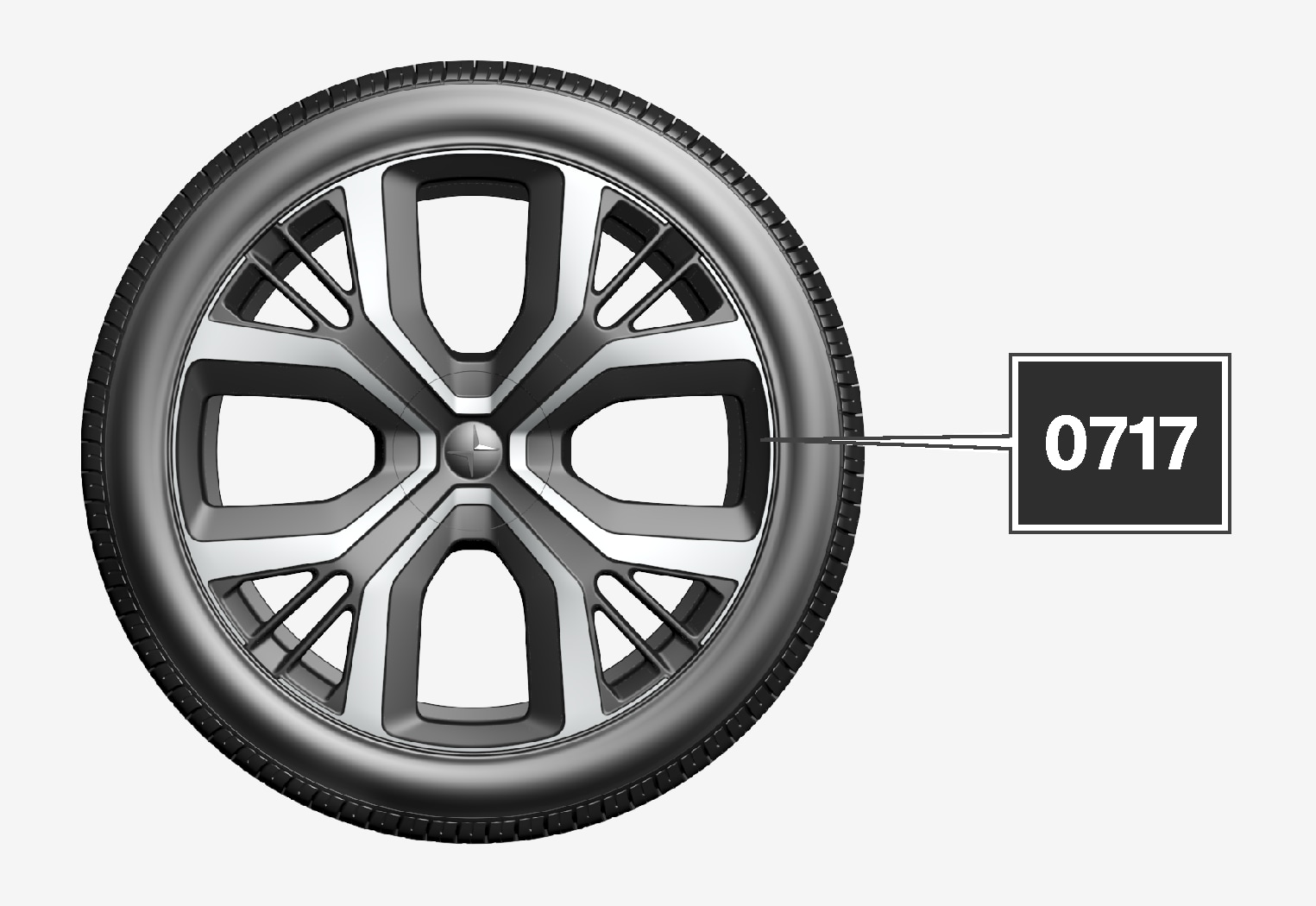Tires
The tires significantly influence the vehicle's driving characteristics. The type, dimensions, tire pressure and speed rating have a considerable impact on how the vehicle performs.
Your vehicle is equipped with tires according to the vehicle's tire information placard on the B-pillar (the structural member at the side of the vehicle, at the rear of the driver's door opening).
Warning
Important
The tires have good road holding characteristics and offer good handling on dry and wet surfaces. It should be noted however that the tires have been developed to give these features on snow/ice-free surfaces.
"All-season" tires provide a somewhat higher degree of roadholding on slippery road surfaces than tires without the "all-season" rating. However, for good roadholding on icy or snow-covered roads, Polestar recommends snow tires on all four wheels.
When replacing tires, be sure that the new tires are the same size designation, type (radial) and preferably from the same manufacturer, on all four wheels. Otherwise there is a risk of altering the vehicle's roadholding and handling characteristics.
Recommended tires
On delivery, the vehicle is equipped with Polestar original tires that have the POL1 marking on the side of the tires. These tires have been designed specifically for your vehicle. It is therefore important when replacing tires that the new tires have this same marking to help maintain the vehicle's driving characteristics, comfort and electricity consumption.
New tires

Tires are perishable goods. After a few years, they will begin to harden and their friction properties will gradually deteriorate. Always replace tires with the freshest tires possible. This is particularly important for snow tires. A series of numbers is imprinted on the sidewall of the tire. The last four digits in the series is the Department of Transportation (DOT) stamp and indicates the week and year the tire was manufactured. The tire in the illustration has 0717 as the last four digits, which means it was manufactured week 7 of 2017.
Tire age
Tires degrade over time, even when they are not being used. Polestar recommends that tires generally be replaced after 6 years of normal service. Heat caused by hot climates, frequent high loading conditions or Ultra Violet (U.V.) exposure can accelerate the aging process. Even if a tire has never been used, it should still be replaced every seven years. A tire with e.g., visible cracks or discoloration should be replaced immediately.
Tire economy
- Maintain correct tire pressure.
- Avoid fast starts, hard braking and tire screeching.
- Tire wear increases with speed.
- Correct wheel alignment (four-wheel alignment) is very important.
- Unbalanced wheels impair tire economy and driving comfort.
- Tires must maintain the same direction of rotation throughout their lifetime.
- The tires on the rear wheels should have as much or more tread depth than the tires on the front wheels in order to reduce the risk of oversteer during hard braking.
- Hitting curbs or potholes can damage the tires and/or wheels permanently.
Tire rotation and tread depth
The vehicle's original tires cannot be changed from the front to rear wheel axle or vice versa.
Driving style, tire pressure, climate and road conditions affect how quickly the tires age and exhibit signs of wear. Maintaining the correct tire pressure helps keep tread wear evenly distributed.
Contact Polestar Customer Support if you need assistance determining the tread depth.
Storing wheels and tires
When storing complete wheels (tires mounted on rims), they should be suspended off the floor or placed on their sides on the floor.
Tires not mounted on rims should be stored on their sides or standing upright, but should not be suspended.
Important
Warning
- The wheel and tire sizes for your Polestar are specified to meet stringent stability and handling requirements. Unapproved wheel/tire size combinations can negatively affect your vehicle's stability and handling.
- Any damage caused by installation of unapproved wheel/tire size combinations will not be covered by your new vehicle warranty. Polestar assumes no responsibility for fatalities, injuries or expenses that may result from such installations.